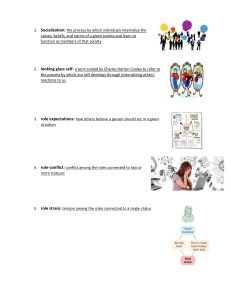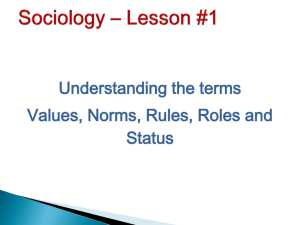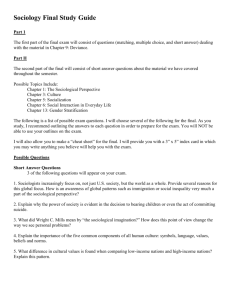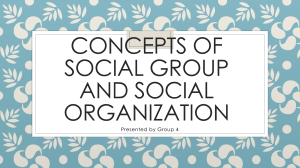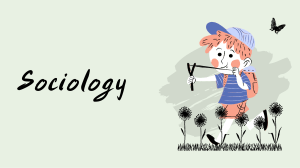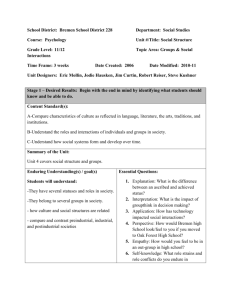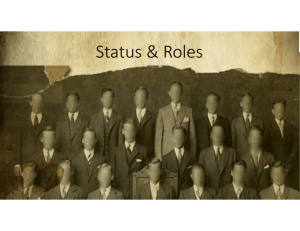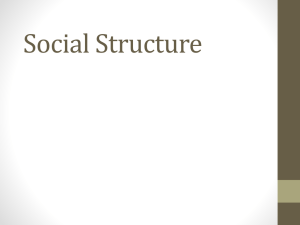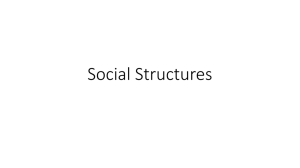Macro-sociology: Broad features of society: social class, gender
advertisement
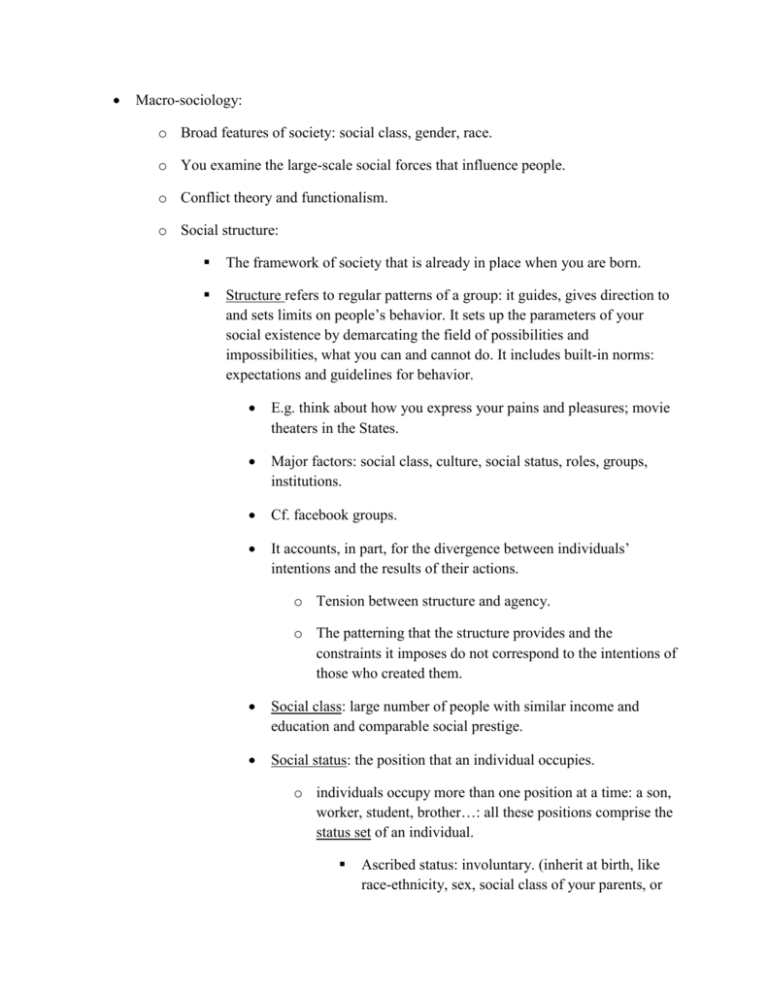
Macro-sociology: o Broad features of society: social class, gender, race. o You examine the large-scale social forces that influence people. o Conflict theory and functionalism. o Social structure: The framework of society that is already in place when you are born. Structure refers to regular patterns of a group: it guides, gives direction to and sets limits on people’s behavior. It sets up the parameters of your social existence by demarcating the field of possibilities and impossibilities, what you can and cannot do. It includes built-in norms: expectations and guidelines for behavior. E.g. think about how you express your pains and pleasures; movie theaters in the States. Major factors: social class, culture, social status, roles, groups, institutions. Cf. facebook groups. It accounts, in part, for the divergence between individuals’ intentions and the results of their actions. o Tension between structure and agency. o The patterning that the structure provides and the constraints it imposes do not correspond to the intentions of those who created them. Social class: large number of people with similar income and education and comparable social prestige. Social status: the position that an individual occupies. o individuals occupy more than one position at a time: a son, worker, student, brother…: all these positions comprise the status set of an individual. Ascribed status: involuntary. (inherit at birth, like race-ethnicity, sex, social class of your parents, or ascribed later in life, like being a teenager, adult, etc.) Achieved status: voluntary. (can be either positive or negative.) Status symbols identify statuses in order to achieve recognition from others. May be positive as well as negative. Master status: cuts across others in an individual’s status set and preponderates over them: sex, race, age. Status inconsistency/discrepancy: mismatch, in terms of standard expectations of behavior, between two or more statuses of an individual. Contrast with class (which is more specifically a matter of market position) or party (which concerns authority or command position in the political/organizational order). Occupation/class, education/skill, race/ethnicity, gender, citizenship, cultural consumption Conspicuous consumption o Roles: behaviors, obligations, and privileges attached to a status. You occupy a status and play a role. Roles help individuals do what society expects them to do. E.g. you are a student, and that’s your role; your expectation to be graded fairly and obligation to attend class, etc. is your role. Like other components of social class, roles demarcate a field of freedom and constraint: built-in norms determining what is appropriate. Roles therefore lay out what is expected of you. Particularly strong in pre-modern societies where there is greater expectation to performs one’s social role in accordance with the norms governing it: master vs. slave, a knight’s courtly love vs. the lady’s resistance. o Groups: people who regularly and consciously interact with one another. shared interests, values, expectations. To belong to a group implies yielding to others the right to make certain decisions about our behavior. Voluntary vs. involuntary associations. Where do you place “family,” “nation,” “religion”?
